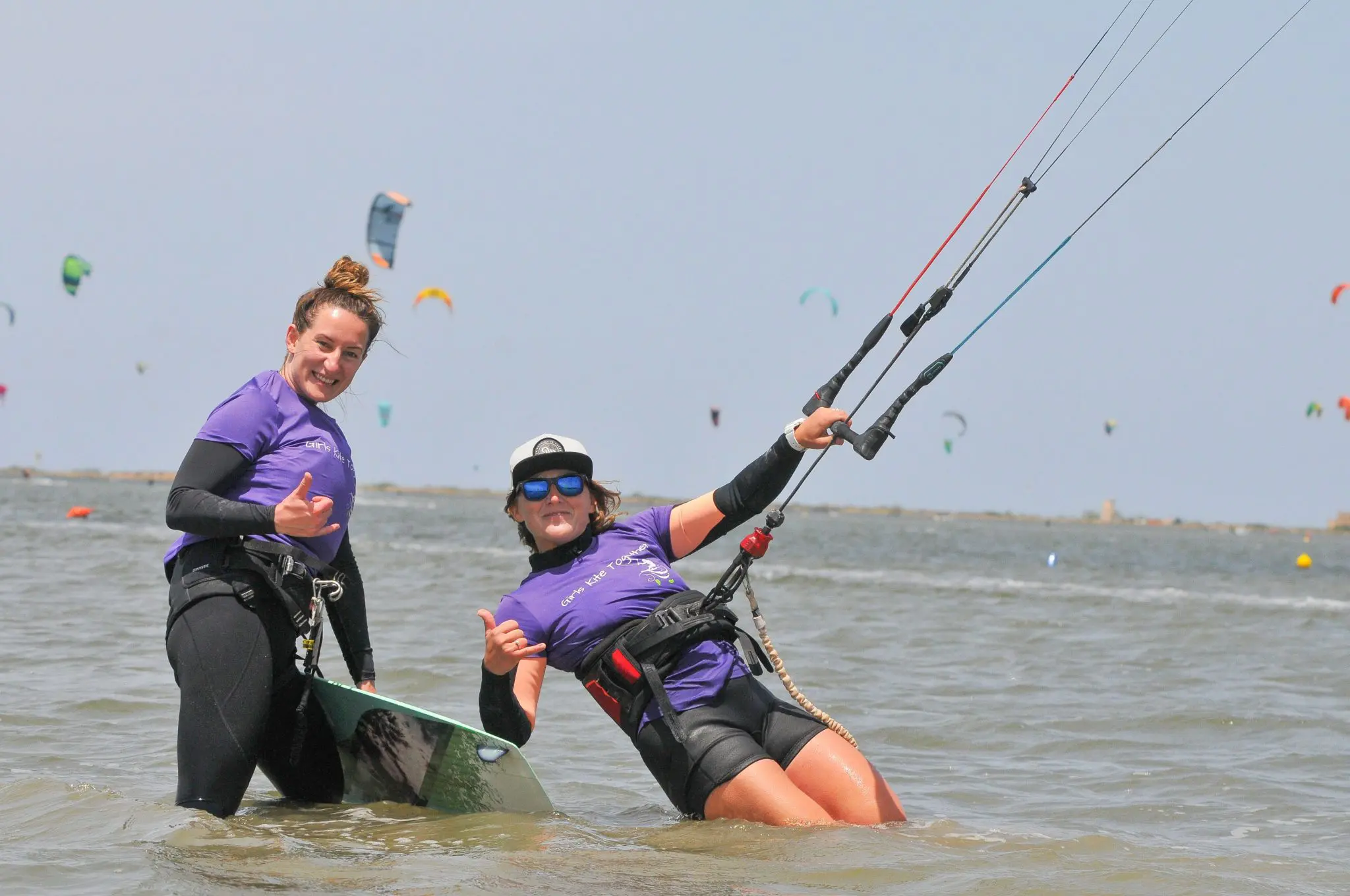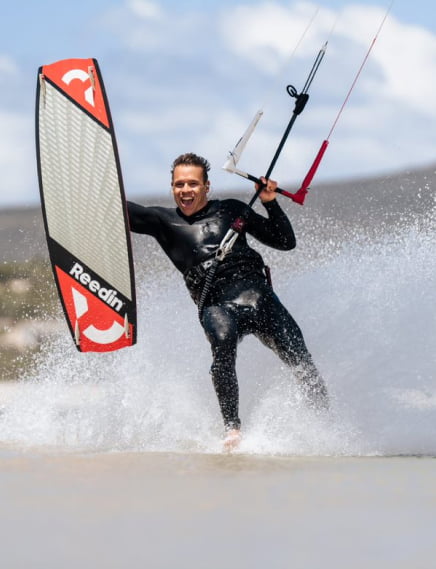Wonder what to expect in your first kitesurfing lesson? Let’s take a look at what you will learn with your qualified kitesurfing instructor. Learning to kitesurf can be a real challenge, and before your first lesson, the expectation of what you are going to do can be daunting to some people. But, it doesn’t haven’t to be!

Kitesurfing lessons are important
People often ask “Do I really need lessons?”. The short answer is a resounding yes! We’ll keep this short, but it’s vital to know why…
Safety
A kitesurfing kite can seriously hurt or kill you if you don’t know what you’re doing. Worse still, it’s easy for you to seriously hurt a member of the general public. If you lose control of your kite then someone 50m away can suddenly be very much involved. Although there is potential for kitesurfing to be dangerous, please don’t let that put you off learning. Once you understand how a kite works, how to fly it properly, and the safety systems available, much of the danger goes away. Think of it like driving lessons. Without them, attempting to drive a car down a busy street would probably cause an accident, but with them, the potential danger is dramatically reduced. It’s the same for kitesurfing, have lessons and be in control.
Confidence
It’s far quicker and easier to learn when you have an experienced instructor there to offer advice and build your confidence.
Focus
Kitesurfing is great for your body and your mind, improving reflexes and helping to get into an enjoyable flow state.
When you learn you’re going to crash your kite a lot. It’s part of the process and something you shouldn’t worry about. Learning with an experienced instructor will make your first days more enjoyable and get you up and riding far quicker.
The Key Stages Of A Kitesurfing Lesson
What are you going to learn in your lessons? And how quickly will you progress?
The order and style of teaching may differ between kite schools, largely depending on the wind and water conditions where they teach but, on the whole, the core skills taught are the same. What has a bigger impact is your experience and natural aptitude to flying a kite – some people take hold of the bar and quickly find themselves flying the kite around the sky, others can’t help but crash repeatedly. These people may need a bit more practice and coaching to start feeling more confident with a kite.
Kiting On Land
Inevitably a kitesurfing lesson will begin with some form of land based instruction – if you already have experience of flying a kite then this stage may be kept shorter, becoming an opportunity for your instructor to evaluate your skills. You’ll be introduced to inflatable kites, how the bar and safety systems work and how they differ to any trainer kites you have already flown. An important part of this first stage is properly understanding the key concepts – the wind window, powerzone and all the safety elements that will ensure yourself and those around you are not put in danger when flying a kite on the land or sea.
Kiting In The Water
Now it’s time to enter the water and better understand the power that a kiteboarding kite can offer. You may start by doing tandem body drags with your instructor before you are given the opportunity to start body dragging on your own. This is an essential skill, allowing you to experience flying the kite in different areas of the powerzone and wind window. You’ll find you can generate far more power than you would on the land and practice techniques that you will eventually use with a board, but without it getting in the way. Every kiteboarder uses body dragging in nearly every session to recover their board when they crash, hence why instructors are strict on students mastering this fundamental skill before using a board. This is also the stage when you will learn how to water relaunch the kite – you will crash your kite a lot when learning, so having the knowledge and confidence to relaunch will remove some of the fear of crashing it.
Alongside this you must learn how to self-rescue – it’s not always possible to relaunch, so learning how to get safely back to the beach is essential.

Kiting With The Board
You’re now getting closer to that goal of getting up on the board. Before you can try waterstarts and have any hope of riding along you should feel confident with these main skills:
- Flying the kite with one hand
- Body dragging upwind
- Flying the kite deep into the powerzone on one side of the wind window
- Relaunch and self-rescue of the kite
The waterstart requires you to control the kite with one hand whilst using your other hand to move the board and get both your feet into the footstraps. It’s harder than it looks and different instructors will use different techniques to help you learn to stay balanced whilst you get setup. Then it’s time to get out of the water and up on the board – there are a lot of different elements to master and coordinate requiring practice and a probably a few crashes. Once up on the board, you’ll work to balance the power from the kite against your body weight, and the position of the board to drive you forwards. For many people, this is where your lessons may end and you’ll go it alone, but don’t be put off having more kitesurfing lessons if you find having an instructor on hand gives you the confidence to progress quicker.


